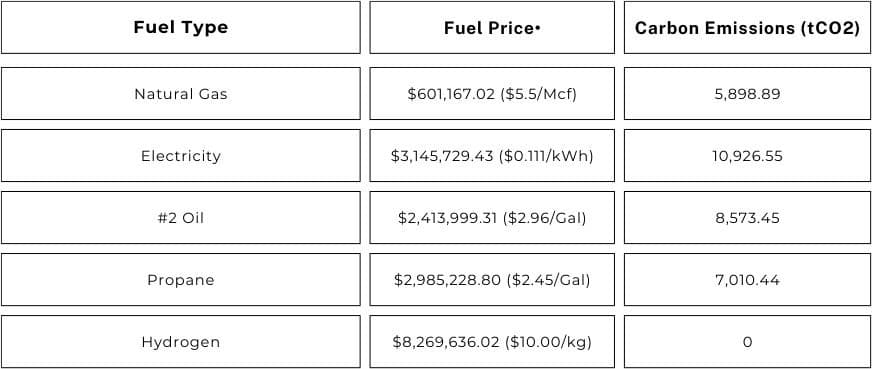Myth Busted: Electricity is a Clean Energy Source
As a world-leading provider of steam solutions, Miura is driven to find sustainable systems that help customers reduce their carbon footprint and emissions. Burning sufficient fuel to reach the high-volume steam output required by organizations like chemical processing plants, food and beverage manufacturing industries, textile manufacturers, and other high-producing industries inevitably negatively affects the environment and risks businesses violating governmental “Clean Air” regulations.
Industrial steam boilers run on fossil fuels known to emit harmful gases. Would using electricity be a better and cleaner energy source? Let’s look at how realistic and sustainable it is to use electric steam boilers.
Is Electricity a Clean Energy Source for Steam Boilers?
With increasing pressure on governmental bodies worldwide to reduce harmful emissions and promote sustainability in all sectors, finding decarbonized solutions for steam generation has become a front-and-center issue.
In fact, the International Energy Agency’s (IEA) research shows that global CO2 emissions could peak this year and will undoubtedly do so by 2025. So, transitioning boilers away from fossil fuels and towards alternative energy sources like electricity might seem like the logical “green” solution. But it isn’t so cut and dry.
Industrial steam boilers typically rely on fuel such as No.2 fuel, kerosene, propane, or natural gases to heat water and produce sufficient steam for large organizations. Burning these energy sources at a high temperature emits large amounts of the poisonous greenhouse gases the world is working to curb.
Running conventional steam boilers around the clock to ensure a ready steam supply significantly depletes fuel resources, wastes steam energy, and produces unnecessary emissions. Certainly, a more responsible approach to burning fossil fuels is needed?
On the face of it, turning to electricity for steam generation is quick and easy. However, as Miura’s Global Business Development Manager, Kiyotaka Sato, explains, a move like that would likely lead to a larger carbon footprint.
“Although some may believe that electricity is a clean energy source, CO2-producing fossil fuels are burnt to generate about 70% of the electricity in the US. You also need more electrical power to generate the same amount of steam produced by a boiler using fossil fuels or natural gas,”
In fact, as of October 2023, 60.4% of electricity generation in the United States was from fossil fuels like coal, petroleum, natural gases, and others. According to the U.S. Energy Information Administration, only 21.3% of that electricity came from renewable sources like wind, solar, and hydropower.
So, as it currently stands, shifting steam generation to electrical energy sources won’t reduce a business’s carbon emissions. More electricity is needed to reach the optimum horsepower achieved by fossil fuels, and an electric boiler’s environmental impact worsens instead of ameliorates. Attempting to power the same conventional boilers and their large volume water tanks with electricity will burn more resources than if they maintained their existing fossil fuel energy sources.
We did the calculations to check. Running Miura’s LX300 model boiler at total capacity for a year using natural gas produces 5,898.89 tCO2 with fuel costs of $601,167.02. Running the same boiler in the same conditions using electricity produces 10,926.55 tCO2 and costs $3,145,729.43, well over double the price. Some of the work in ensuring a smooth transition towards cleaner energy sources is keeping costs low so businesses can afford it. So, in this regard, electrical power is also currently falling short.
Our table below demonstrates the cost versus carbon emission comparison between various energy sources, indicating that there’s still work to do to make electricity a real, clean alternative.

*Average prices per unit of fuel in 2021 | US Energy Information Administration
Miura: Greener Steam Solutions
How, then, does the industrial steam industry and all the sectors it serves find a greener solution? By choosing a boiler system that drastically reduces emissions while still performing efficiently.
Our water tube boilers are compact yet powerful. They heat up and cool down quickly, eliminating the waste from idling boilers. Read more about Miura’s plans for a sustainable future and learn why your business needs an ultra-low NOx steam boiler to keep your efficiency and emissions low.
Contact us today for more information about our low NOx boilers, and speak to one of our team to find the best steam solution for your needs.


